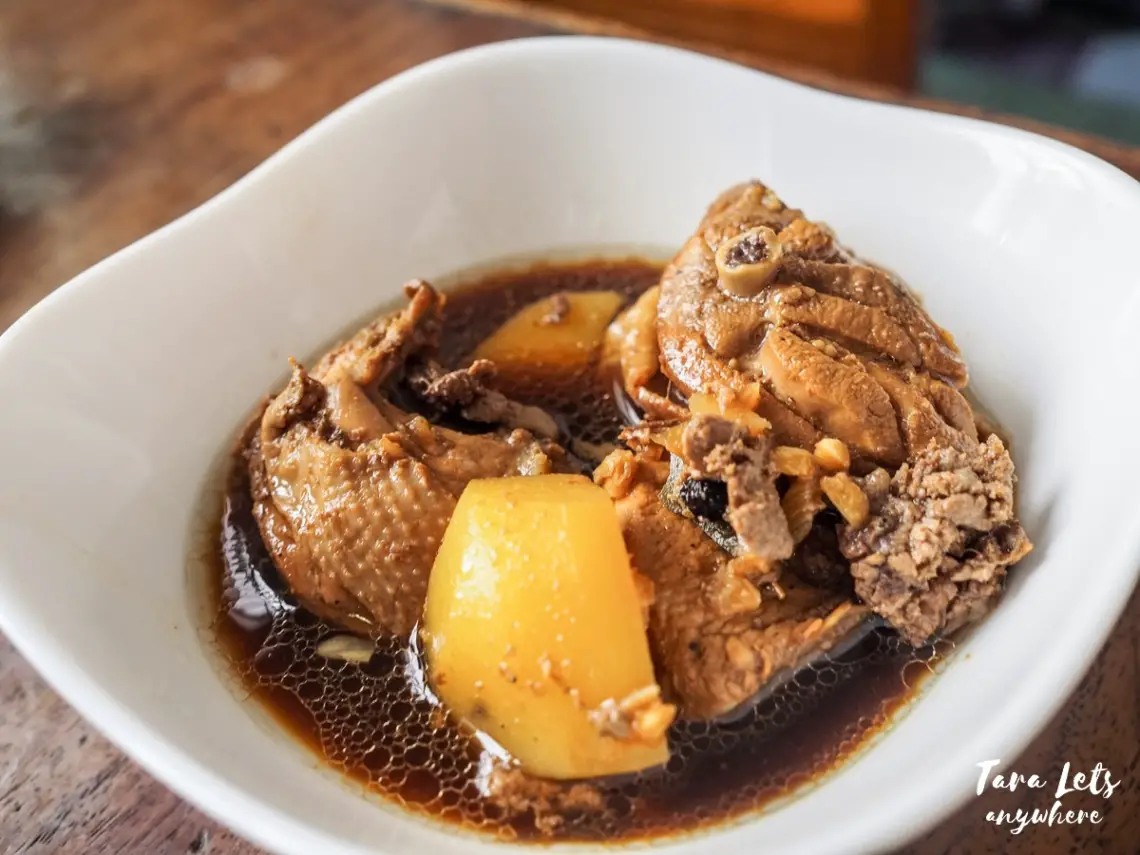
Beyond Adobo: 25 Filipino Food You Need to Try
Sometime ago, I was doing a random search in Google and found myself looking at the top results for Filipino food guides — and discovered that none of them were written by a Filipino! So I thought about contributing to the knowledge on Filipino food, as someone who’s a local who’s lived here for 30+ years.
This guide is made to present to you the best traditional Filipino dishes found all over the country. It’s a good starting point especially for those of you who are unfamiliar with Filipino cuisine.
Contents
What is Filipino food
There is not one taste that defines Filipino cuisine.
In essence, Filipino food is simple — Filipinos make use of local harvests and season it with basic ingredients like salt, pepper, bay leaf, and sometimes green chili for a little spice.
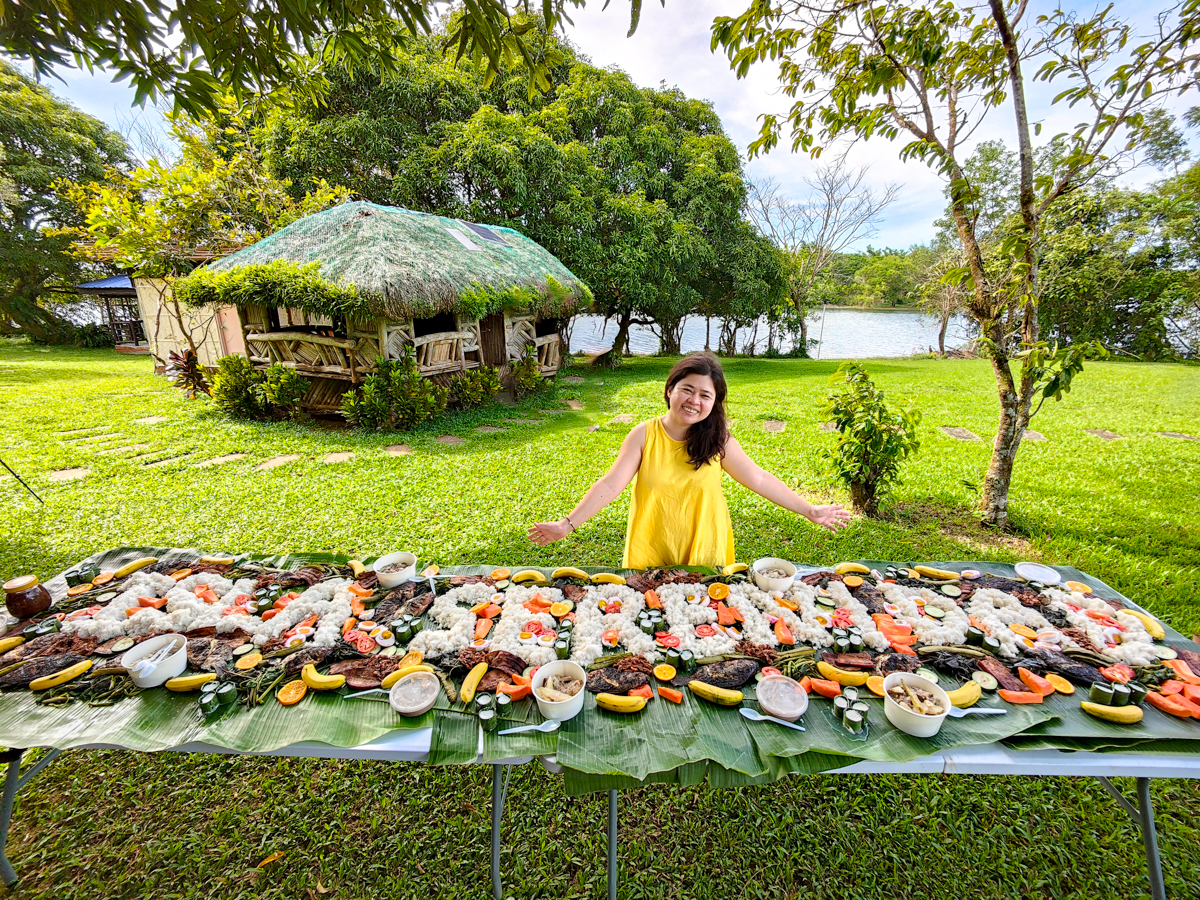
Though you won’t often find complex flavors like the noodles in Malaysia or curries in Thailand, what makes Filipino food great is the use of fresh ingredients. The Philippines is blessed with bountiful lands and oceans, which makes all kinds of greens, vegetables, fruits, seafood and fishes easily available depending on the season.
Funnily enough, Filipinos complement the use of minimal spices with the addition of sauces and dips. So you will find dishes like kare-kare served with bagoong, longganisa with suka (vinegar), and tinola with patis (fish sauce).
Another interesting fact about Filipino food is that is heavily influenced by Spanish, Chinese, and other Asian flavors due to centuries of colonialization. Over the years, these dishes are adapted and changed to suit the Filipino taste.
Filipino cuisine often faces criticisms for not being as good as its Southeast Asian counterparts. In fact, one of the most debated topic is tinola — a chicken soup that a lot of Filipinos love, and some claim to lack flavor.
In my opinion, Filipino food is not (yet) on par with other cuisines in Asia. In fact, even foreigners who decide to settle here permanently don’t do so for food (but hey, we do have beautiful beaches). It is not just due to the use of minimal spices but also pricing issues brought about by insufficient economic policies and lack of support for farmers, causing the people to take “shortcuts” and “hacks” when cooking. However, I believe that discussion is beyond the scope of this guide.
The best Filipino food are home-cooked meals. There are also crowd-favorite restaurants that serve traditional Filipino dishes and regional and local varieties, such as Kanin Club, Manam, among others.
If there is one thing that you should know about the Filipino food culture, it’s that Filipinos love to eat. For most Filipinos, a meal consists of a rice and a main viand, sometimes with a vegetable side dish. We eat rice meals two to three times a day (breakfast, lunch, and dinner). A dessert of fruits and/or sweets may follow.
I’ve divided this guide into different sections. As rice is a staple, most of the food that you will see here is an ulam (viand).
Mains
These are the most popular traditional Filipino dishes served over rice. Remember that the Philippines is an archipelago made up of thousands of islands, so each region has a variation of each dish.
1. Adobo
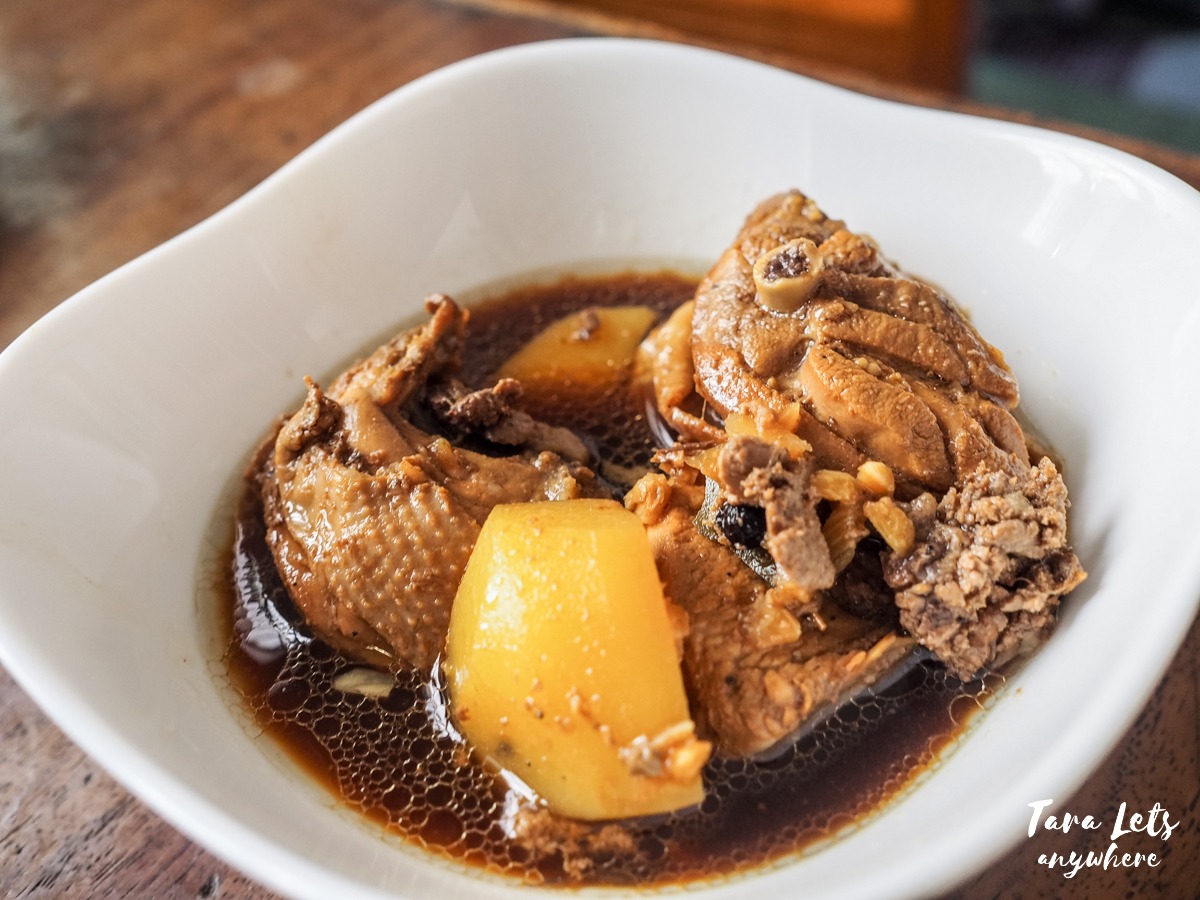
Adobo is the Philippine’s national dish. It consists of meat (pork or chicken or both) braised in vinegar and then spiced with garlic, bay leaf, and black pepper. It has a very unique taste — the sauce is a delicate mixture of salty, sour, and oftentimes sweet. It is served over white rice.
There are many variations of adobo in the country, depending on the region where it’s made. There is a joke that there’s as many recipes for adobo as the 7000 islands in the country.
As for me, my personal favorite is adobo sa gata (adobo with coconut milk).
2. Sinigang
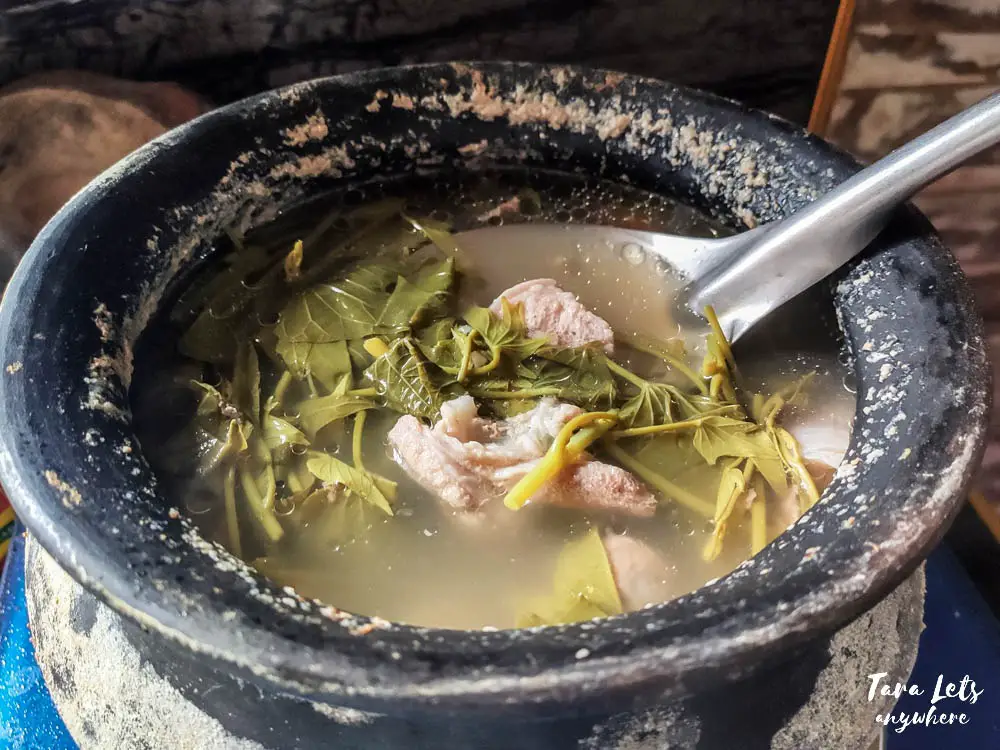
Sinigang is a delightful sour soup, with a distinct tangy flavor from tamarind, calamansi, or other sour or unripe fruits. It also has meat/fish and an assortment of vegetables such as gabi (taro corms), labanos (white radish), kangkong (water spinach), sitaw (yardlong beans), and talong (eggplant).
It is easy to make and so most restaurants serve a decent bowl of sinigang. You can eat it as is or with rice.
If I could recommend only one Filipino dish for you to try, it would be sinigang. My favorite recipe of sinigang is my father’s, which uses pork buto-buto (pork meat with bones, which is very flavorful) instead of the liempo or kasim parts (the meaty parts of pork meat) that most restaurants often go for. I also have a preference for sinigang na bangus sa bayabas (milkfish with guava), which has a unique flavor from the usual sinigang recipe.
Talk to different Filipinos around the country and you’ll find different meats and souring agents used for sinigang.
3. Tinola
Ah, tinola — the one Filipino dish that has a love/hate relationship with Filipinos. Tinola is a simple, comforting chicken soup flavored with ginger, garlic, and green papaya or sayote (chayote). It is often enjoyed with rice and a fish sauce dip for added flavor.
Tinola is a staple in Filipino cuisine, and it is made for everyday meals or as a nutritious bowl for someone who is sick.
In my opinion, tinola is decent, but don’t expect it to blow your mind. Still, it’s one of the most culturally significant dishes in the Philippines and even played a part in a chapter in Noli me Tangere by Jose Rizal, so I urge you to give it a try.
4. Lechon
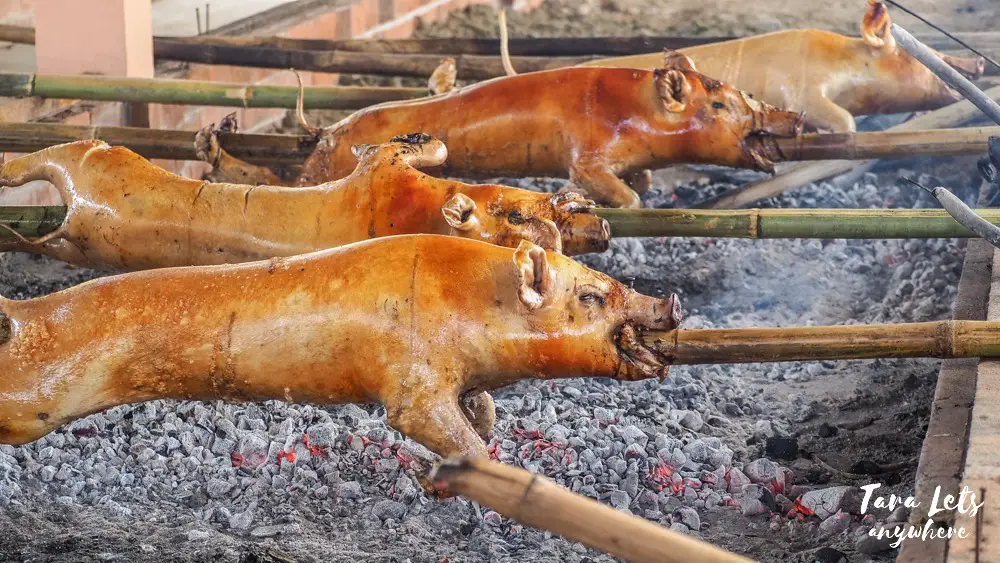
Lechon is one of the most unique Filipino delicacies you can find. It refers to roasted sucking pig and it is often the centerpiece of special celebrations such as birthdays, weddings, and fiestas. A whole lechon is expensive, so when it is served you know that the hosts spared no expense.
What Filipinos love about the lechon is the crispy skin and the succulent meat. In Manila, lechon is simply seasoned with salt and pepper and then served with gravy. In other provinces in the Philippines, lechon is roasted along with other herbs and spices. In some provinces like Zamboanga City, you can find cooking lechon as part of their festival activities.
Cebu claims to have the finest lechons in the country. Some of the popular lechon restaurants in the Philippines are Rico’s Lechon (known for their spicy, seasoned Cebu-style lechon) and ZuBuchon.
5. Kare-kare
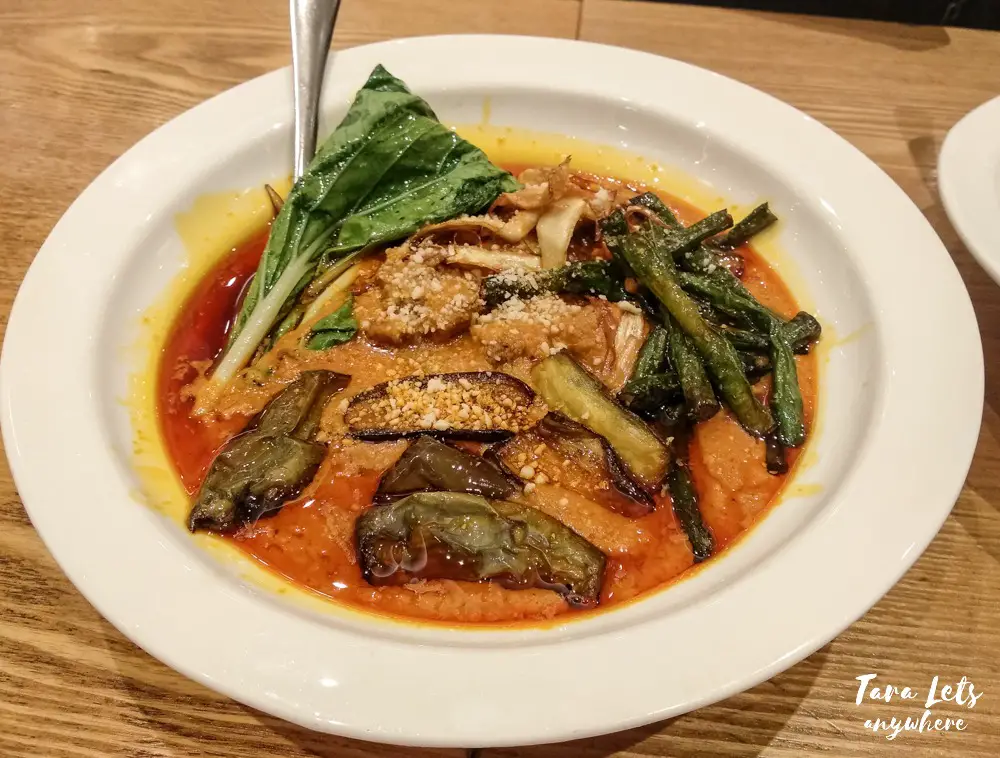
Kare-kare is a stew with a savory peanut sauce. A typical kare-kare has beef and oxtail plus vegetables such as eggplant, pechay, puso ng saging (heart of banana), and green beans.
It is often served with a side of accompanying bagoong (shrimp paste).
I love kare-kare. Whenever I go to buffets in Manila, I always look for it in the Filipino food section. As you can tell, it’s rich, nutty, and most importantly delicious. I love the thick sauce, the tender meat, and how it’s a complete dish with all the vegetables included. Kare-kare is a beloved Filipino dish by all.
6. Sisig
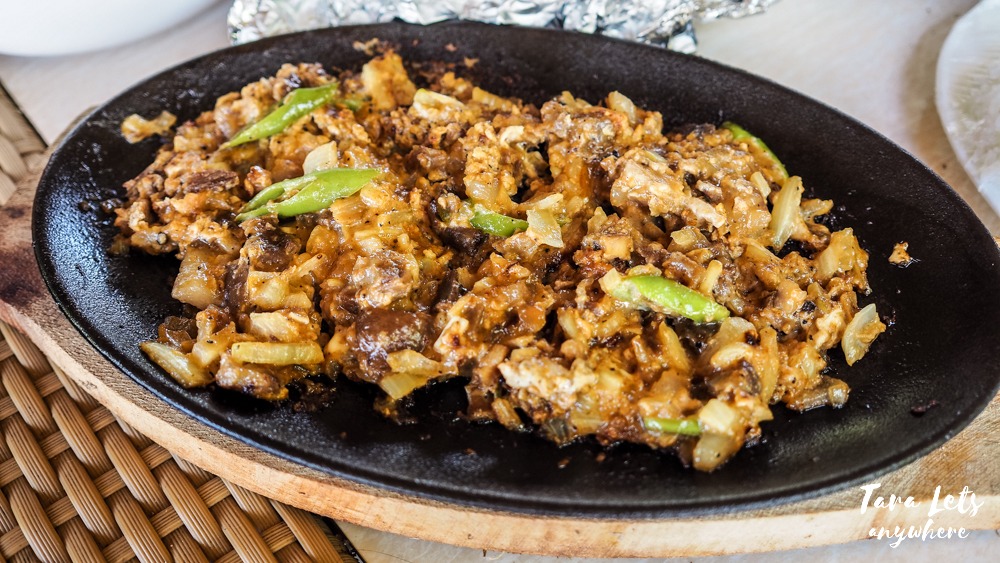
Sisig is a sizzling dish made from chopped pig’s face and ears, seasoned with calamansi, onions, and chili peppers and served on a hot plate. While it’s commonly eaten with rice, it is also a well-known appetizer or pulutan (beer food).
This Filipino dish originated from Pampanga, and since then it has become a staple in many Filipino restaurants. The common version of sisig that you can find is pork sisig with egg. Another popular recipe uses mayonnaise to coat the meat. Alternative versions include chicken, tuna, and tofu sisig.
Sisig is delicious and you can’t go wrong with it. The late Anthony Bourdain once predicted that it’ll be the next big thing in the food scene.
7. Dinuguan
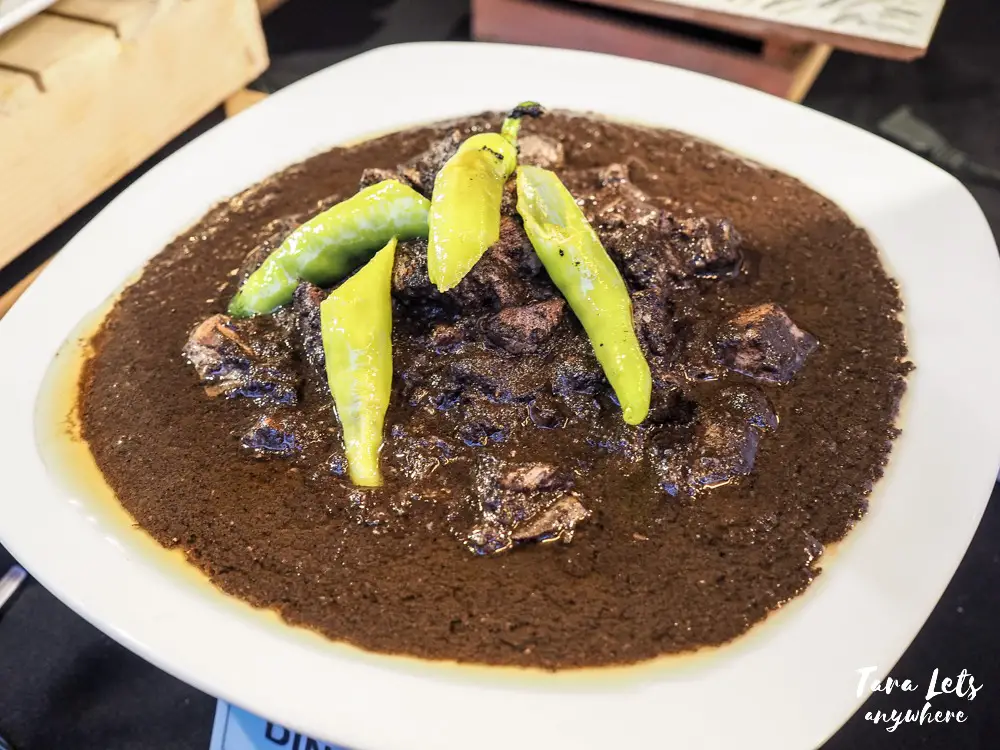
Dinuguan is essentially pork blood stew. It’s composed of pork offal and/or meat in a rich broth made of pig’s blood and seasoned with vinegar, garlic, and chili.
Some Filipinos do not eat dinuguan for religious reasons, and a lot of foreigners also skip it. But if you’re a foodie lover, I suggest to let out your adventurous palate and try it. Contrary to common belief, it is clean and it’s made from edible pig’s blood (available in markets) and it’s really good. You can eat it with puto (steamed rice cake) or served over rice.
8. Binagoongan
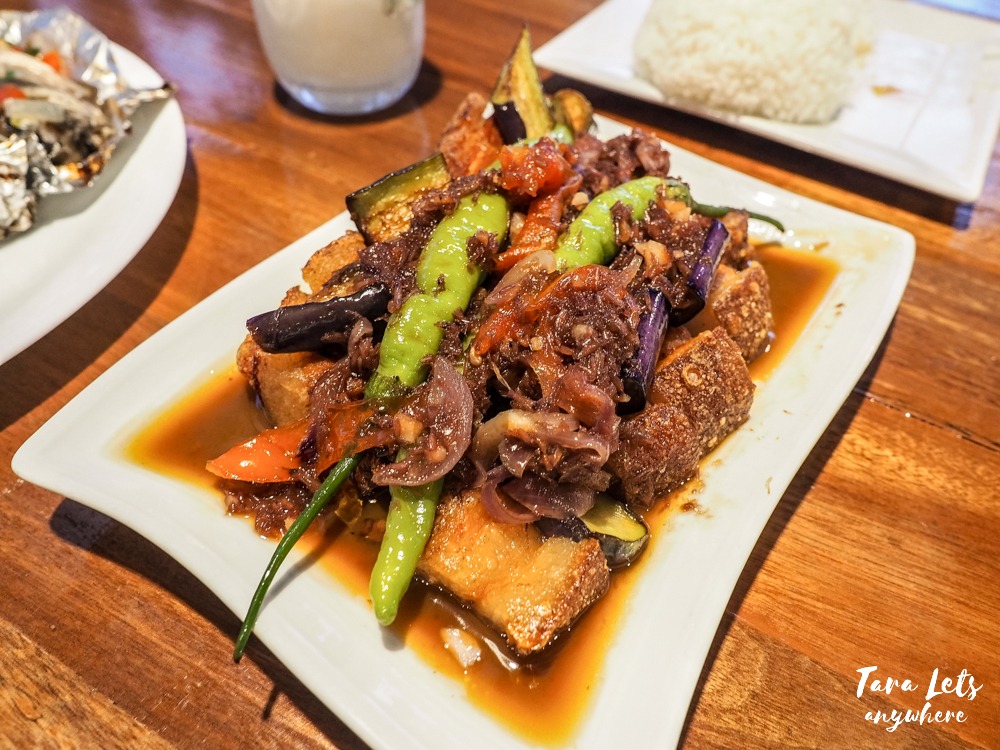
Binangoongan refers to pork belly stewed in tomatoes, shrimp paste, and chili peppers. It is delicious, although some people who are unfamiliar with shrimp paste may find it smelly.
9. Bicol express
Bicol express is a specialty of the Bicolanos and represents their love for spicy food. It is composed of cubed pork meat cooked in coconut milk, shrimp paste, and lots of chili peppers. Different kinds of chili may be used depending on how you spicy you want it to be.
Bicol express is a comfort food and it is perfect if you’re a spicy food lover. It has a similar Bicolano dish that tastes mostly the same but drier, called pinangat.
10. Bistek
Bistek is another favorite of mine. Bistek is Filipino beef steak — a dish made of thinly sliced beef marinated and braised in a mixture of calamansi (a citrus fruit), soy sauce, onions, and garlic and pepper. The meat is tender and the sauce has salty, tangy, and savory taste.
Bistek is too flavorful to eat on its own, so it’s best to eat it with rice.
11. Crispy pata
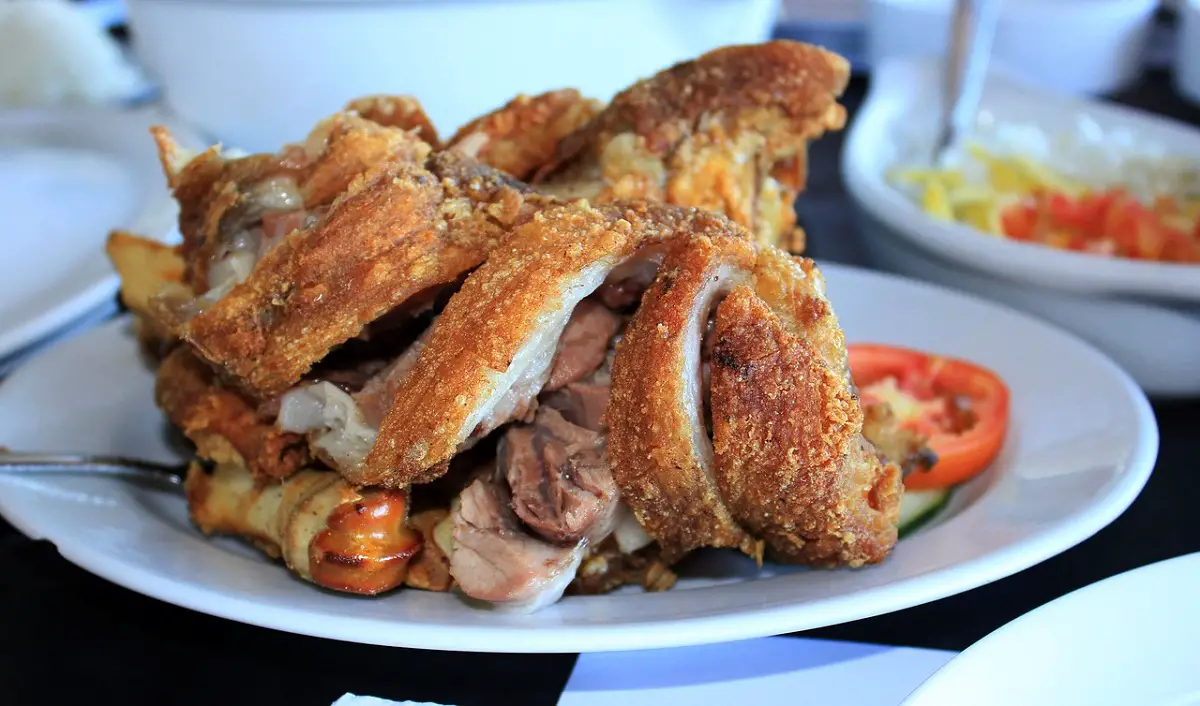
You will find a lot of fried dishes in Filipino cuisine, so don’t be surprised with the simplicity of this dish. Crispy pata refers to deep-fried pig trotters or knuckles, prized for their crispy skin and tender, flavorful meat. It is usually served with a dipping sauce like spiced vinegar.
Crispy pata is a kind of a sinful delight. Just watch your plate if you have any health conditions!
12. Chicken inasal
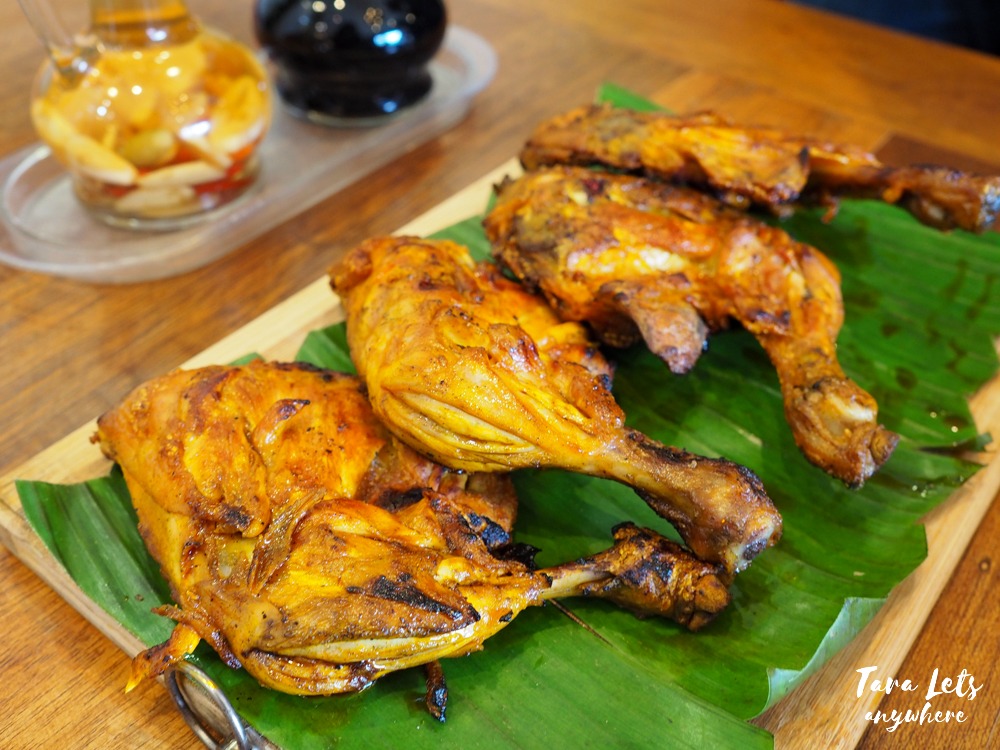
Chicken inasal (or simply inasal) is a popular dish in the Philippines. This grilled chicken recipe originated in Bacolod City in the Visayan Region.
The chicken is first marinated in calamansi, vinegar, soy sauce, garlic, ginger, and lemongrass. Anatto oil is also used, which gives it a distinct orange hue. The chicken is then grilled while being basted with the marinade.
Chicken inasal is good especially if cooked right. You can enjoy juicy, smoky-flavored chicken — the perfect accompaniment to rice. It’s often served with a dip of toyomansi with chili.
There are a lot of Filipino restaurant specializing in chicken inasal, most notably the fast food chain Mang Inasal, so you won’t have a problem looking for it.
13. Inihaw na bangus
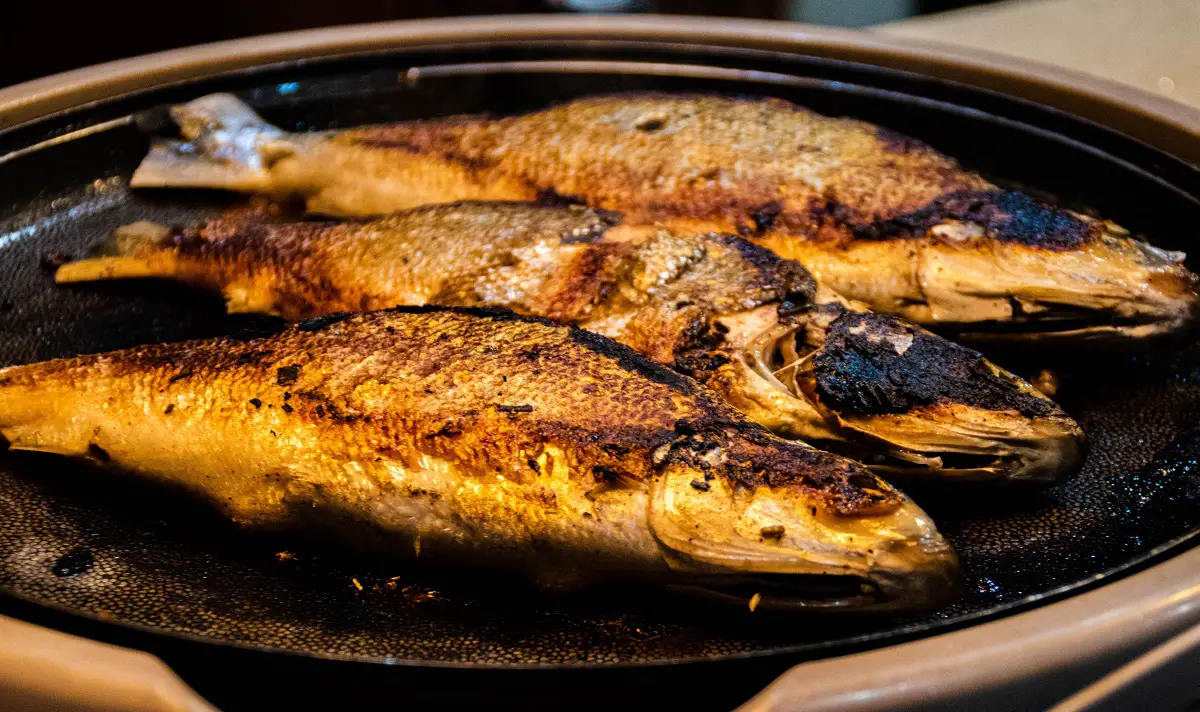
Inihaw na bangus (grilled milk fish) is one of the most underrated Filipino foods in my opinion. The fish is stuffed with tomatoes, onions, and ginger, which gives the fish meat added aroma and flavor. It’s often served with a toyomansi (soy sauce and calamansi) dip and eaten with rice.
This is one of my favorite seafood dishes in the Philippines and it’s a testament to the abundant oceans that surround us. (Eating freshly caught seafood is one of the things I like about living in the Philippines.) I also like its simplicity and how the freshness elevates it from good to great.
14. Kinilaw
The word kinilaw literally means “eaten raw.” Kinilaw is the Filipino version of ceviche, featuring raw fish marinated in vinegar, citrus juice, onions, ginger, and chili peppers. The result is a refreshing and tangy appetizer or ulam.
Different types of fish can be used to make kinilaw. The quality of kinilaw depends on the freshness of the fish. In fact, the best kinilaw I’ve eaten was during an island hopping tour in Balabac, when our boatmen decided to go fishing and then used their catch to make sinigang and kinilaw. It was interesting to watch them cook, especially as we saw the fish slices turn from pink to opaque white.
Vegetables
15. Pinakbet
https://www.instagram.com/p/CRK7-H-DSt4/Pinakbet is a traditional Filipino vegetable stew made from locally grown produce. Originating from the Ilocos Region, this dish features a medley of vegetable including ampalaya (bitter melon), kalabasa (squash), talong (eggplant), okra, and string beans, sautéed with garlic, onions, tomatoes, and bagoong (shrimp paste). Sometimes protein like chopped pork is also added.
This dish is hearty and nutritious, with a distinct salty and umami flavor.
Although pinakbet is popular in Filipino households, it isn’t as enticing to non-locals. For me, the flavors in pinakbet don’t really combine together well and I find it hard to enjoy a food with so many bitter ingredients. Again, to each his own — try it before you judge it. (That saying, I love pinakbet pizza, found in Ilocos Norte.)
16. Laing
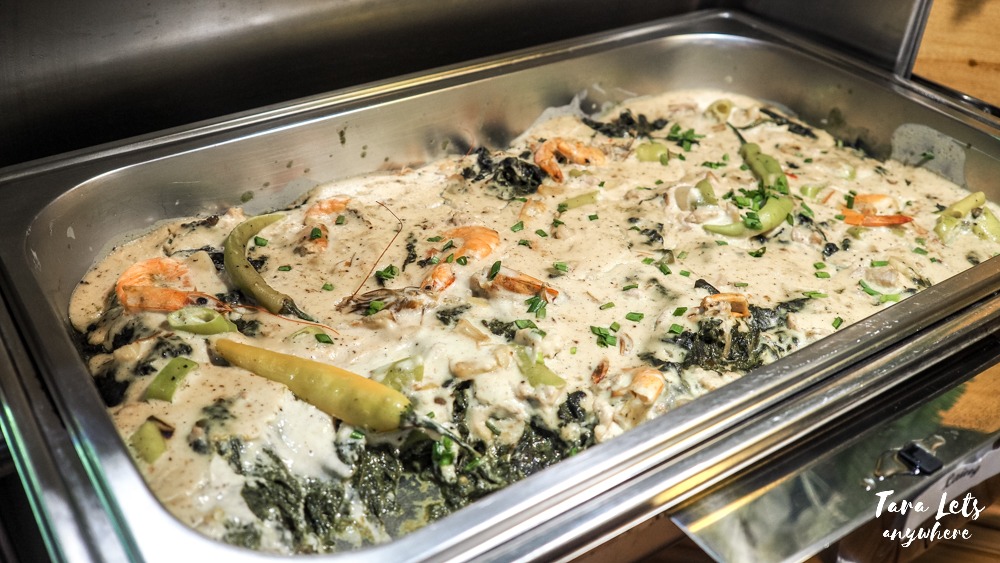
Laing is a velvety dish made with gabi (taro) leaves, coconut milk, and chilies. Sometimes it also has seafood like shrimp and dilis.
This is my favorite vegetable dish, and it can be served as a main or a side. It’s simple, tasty, and creamy with a sweet and spicy kick.
17. Ginataang puso ng saging
Ginataang puso ng saging refers to banana blossoms cooked in coconut milk. The banana blossoms are soft yet firm and, similar to laing, the dish is both creamy and spicy. It’s often served as a side dish.
I can eat a small bowl of this on its own. I guess you can tell that I am biased toward coconut-based dishes!
Breakfast
Filipinos start the day with a hearty breakfast. For many, this means rice meal and coffee. Other common breakfast staples include local bread, noodles, porridge, and other warm bowls. Different kakanins, including variations of sticky rice, are also served for breakfast.
18. Pandesal
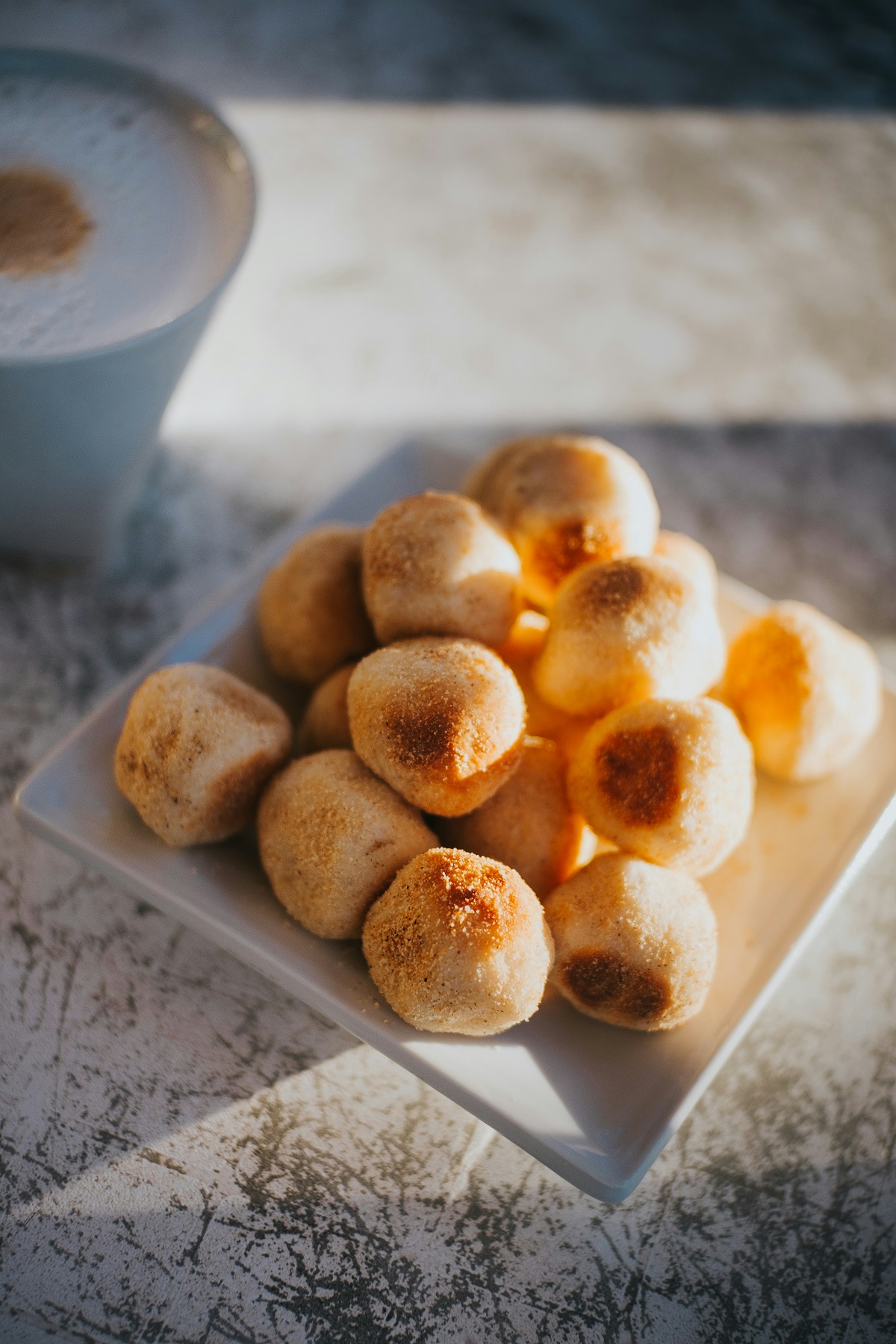
Pandesal is a Filipino breakfast staple. It refers to a soft and fluffy bread roll, often enjoyed with cheese or sweet spreads like peanut butter, coconut jam, and other fillings.
One common observation that foreigners make about pandesal is that it’s sweet for a plain bread. It’s because it already has sugar before being baked.
A lot of Filipinos — myself included — enjoy dipping pandesal into warm black coffee.
19. Silog
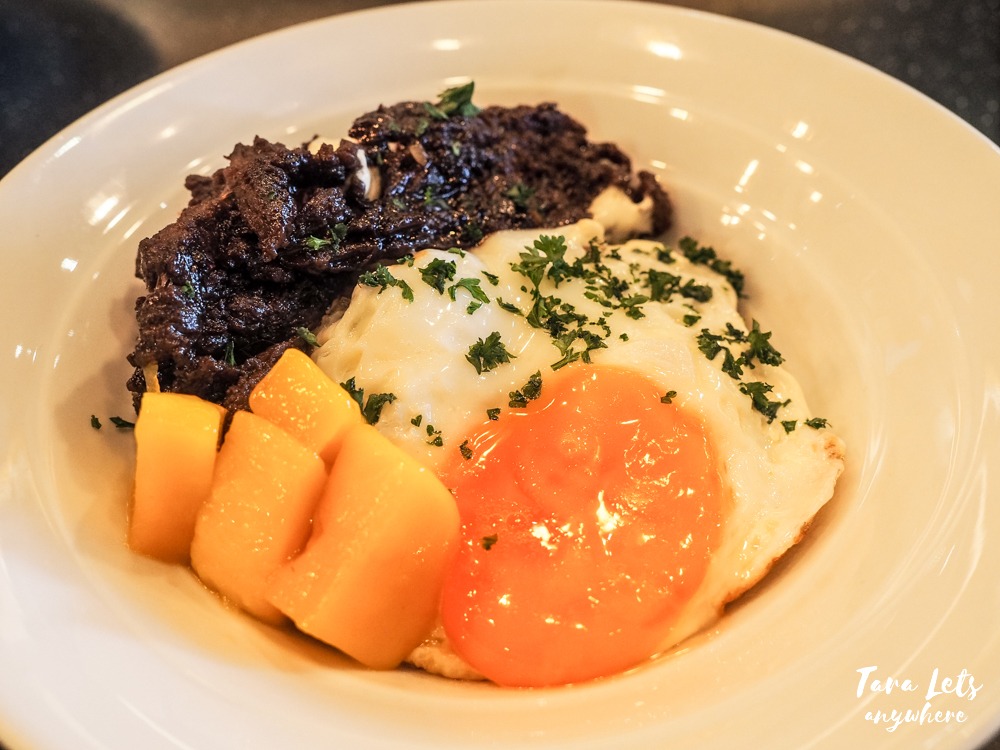
Silog is a popular Filipino breakfast dish that combines three essential components: sinangag (garlic fried rice), itlog (fried egg), and an ulam (a choice of meat). The name “silog” is derived from the combination of these.
Popular kinds of silog meals include tapsilog (which comes with tapa, or cured beef), longsilog (longganisa, or Filipino-style sausage), tosilog (tosino), bangsilog (bangus, or milkfish), and hotsilog (hotdog).
The beauty of a silog meal is in its convenience — you can use rice from the day before to make delicious-smelling, garlicky sinangag and then add easily fried protein to your plate. You can also add vegetables like sliced cucumbers to make it healthy.
My favorite breakfast is tapsilog and if I could I would declare it the Philippine’s national breakfast. The combinations are good and I’m telling you — you’ll crave for it after your first try. Another reason that I like tapsilog is that it tastes mostly the same no matter where you are in the Philippines. I guess there are only so many ways you can make cured beef.
20. Longganisa
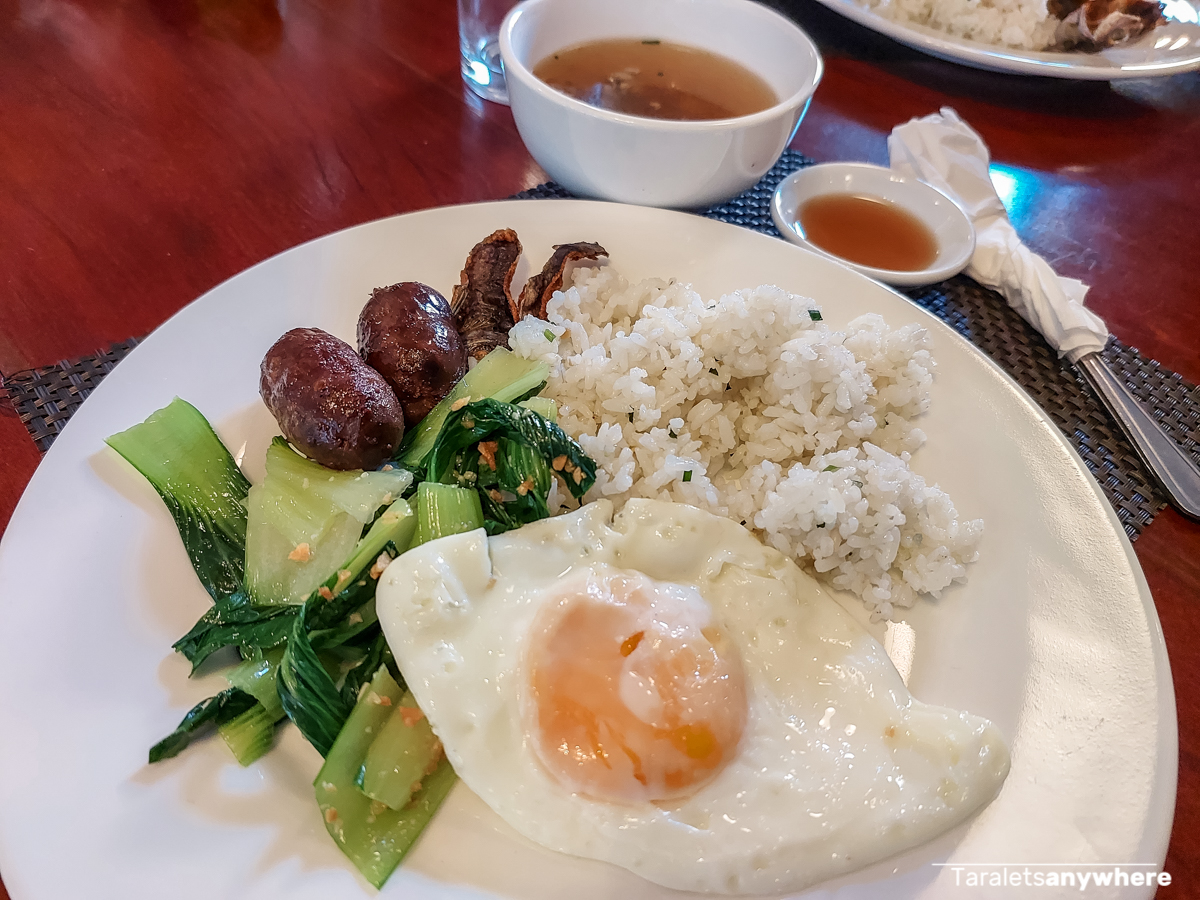
We’ve already mentioned longganisa above, but it really deserves a spot on its own.
Longganisa is Filipino sausage, made from ground pork seasoned with a unique blend of spices and other ingredients, which typically include garlic, vinegar, soy sauce, and sugar. It has a distinctive sweet and tangy flavor, which sets it apart from other sausages.
There are many variations of longganisa around the Philippines, which really goes to show you how important it is in the Filipino household. Vigan longganisa is known for its garlicky flavor, while Lucban longganisa is sweet and tangy, and Cebu longganisa is sweet and spicy.
Longganisa is typically served for breakfast, but it can also be used as an ingredient for another dish.
Merienda and snacks
Merienda refers to late afternoon snack, and it can range from fried food (banana cue, turon, lumpia) to desserts like bilo-bilo, ginataang mais, halo-halo, and more.
21. Lumpia
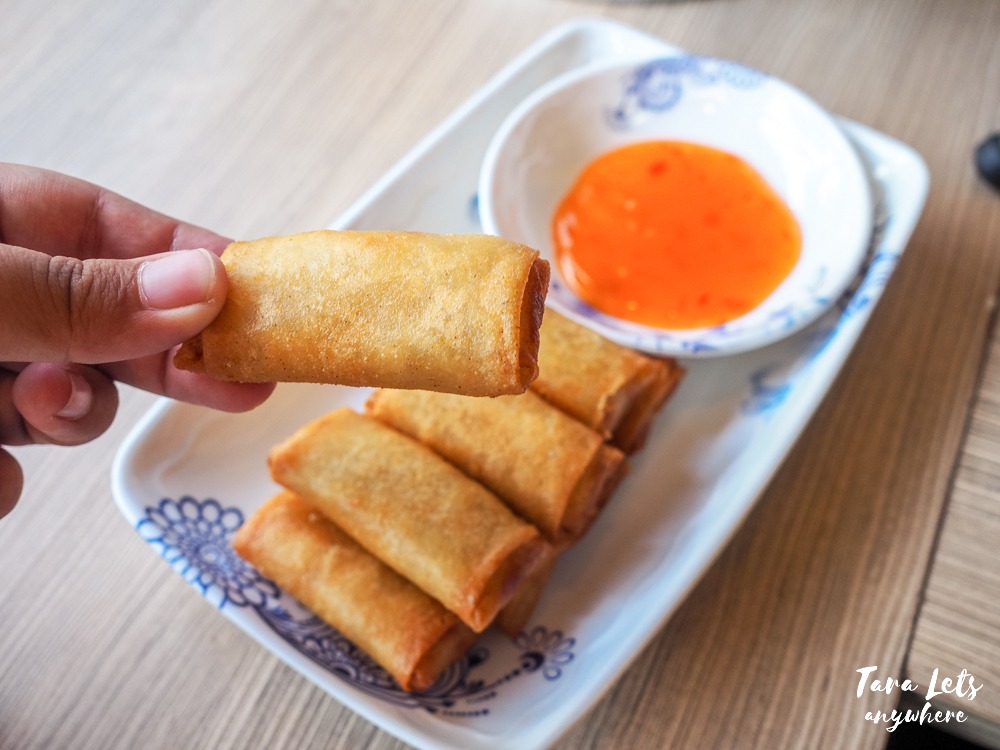
Lumpia is one of the most popular Filipino snack food. It refers to Filipino spring rolls filled with a mixture of minced meat (usually pork) and vegetables, which is then fried until golden and crispy.
Filipinos love lumpia so much that there are memes about how no party is complete without lumpia and guests sneaking pieces of lumpia home. I remember that our family would often make lumpia during Christmas and New Year, and I was addicted to it that I would finish several lumpias before the midnight. As an adult, I developed a preference to lumpiang bangus (lumpia made with milk fish).
Note: There are different kinds of lumpia, including lumpiang shanghai, lumpiang gulay, and lumpiang ubod (fresh lumpia). Typically when we say lumpia, we refer to lumpiang shanghai.
22. Pancit palabok
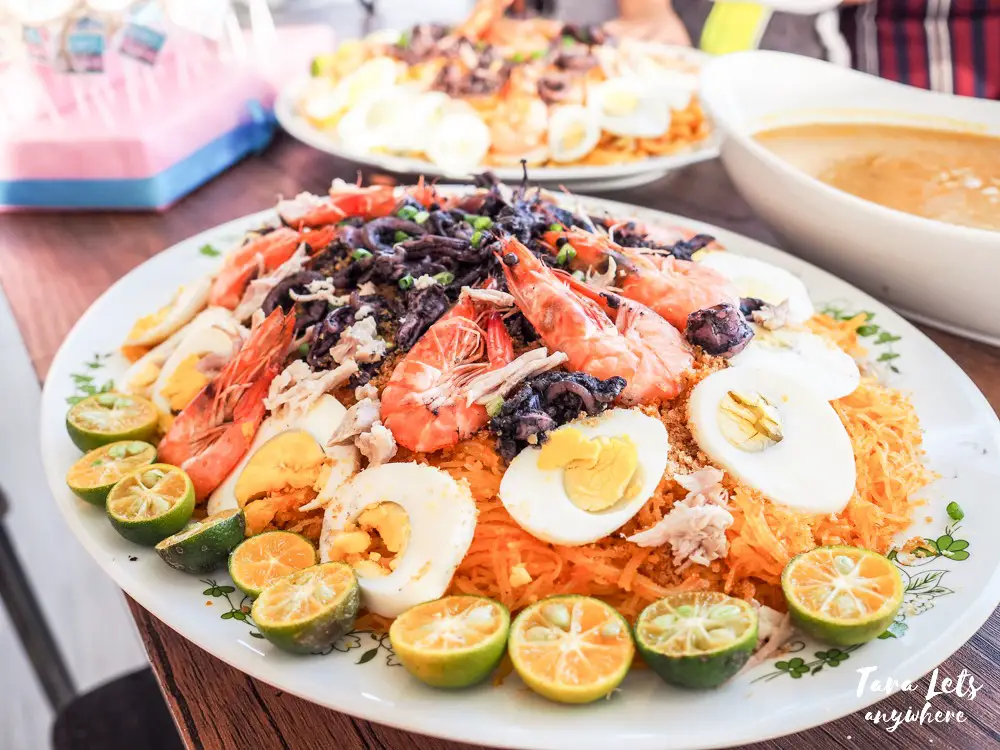
Pancit is one of traditional Filipino food, and it can be eaten for breakfast or merienda, with special plates served during special occasions. Pancit palabok is a thin-noodle dish with shrimped paste, topped with shrimp, crushed chicharon (pork cracklings), tinapa flakes, slices of hard-boiled egg, scallions and fried garlic bits.
There is another version of pancit palabok which uses a thicker noodles and is called pancit malabon.
I find that pancit palabok from restaurants are often a hit or a miss. My favorite palabok is actually from the fast food restaurant Jollibee and from a humble catering near our house, which serves terrific palabok with squid.
Dessert
23. Halo-halo
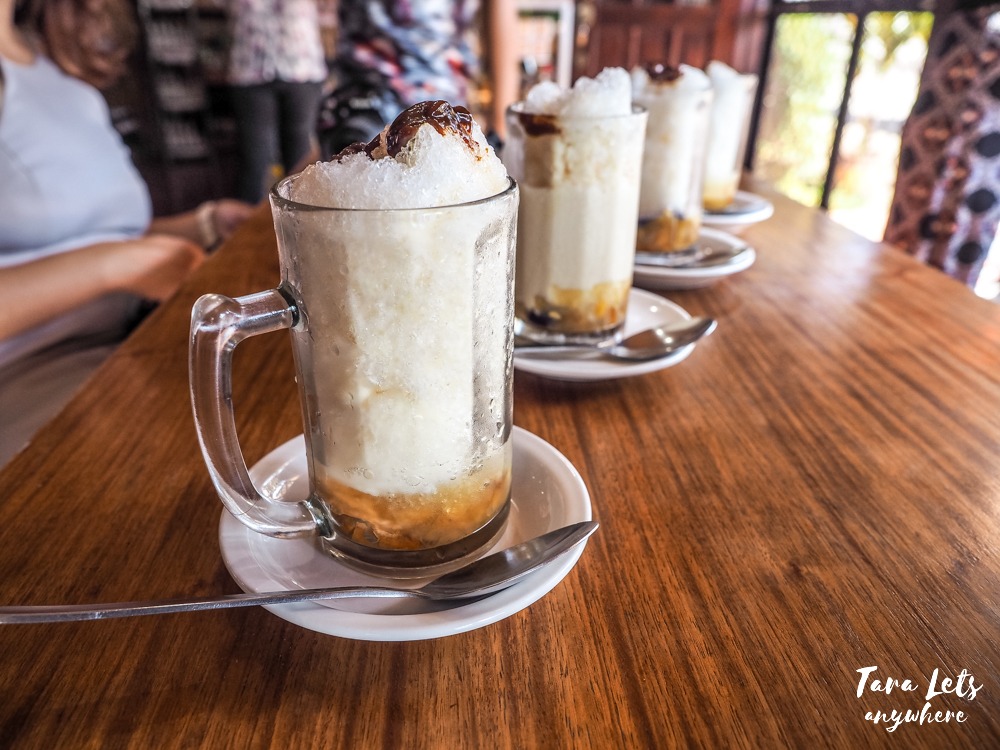
Halo-halo is one of the most popular desserts in the Philippines, especially during the summer. The word halo-halo means “mix-mix” because it has a variety of ingredients and you have to mix them together before eating. But it doesn’t mean you can just use whatever is in your pantry!
This dessert usually consists of shaved ice, milk, and ingredients such as kaong (sugar berry fruit), gulaman (jelly), nata de coco, sago (tapioca pearls), different fruits (jackfruit, sweetened banana plantain, kamote, or sweet potato), and pinipig. It is topped with flan, ube (purple yam), or ice cream.
Halo-halo is a very colorful concoction, and it’s refreshing and delicious.
You can easily find it in roadside stalls selling afternoon snacks and Filipino restaurants. Some popular restaurants like Chowking serve it too sweet, so you might want to ask them to halve the sugar just in case.
24. Leche flan
Leche flan is a creamy caramel custard dessert made with egg yolks, milk, and sugar, which is then steamed until set and topped with caramel syrup.
Not all leche flans are made the same. For me, the best leche flan is one that’s firm and has the right amount of sweetness — Filipinos sometimes make desserts too sweet. You can enjoy it on its own or as topping to halo-halo.
Street food
25. Balut
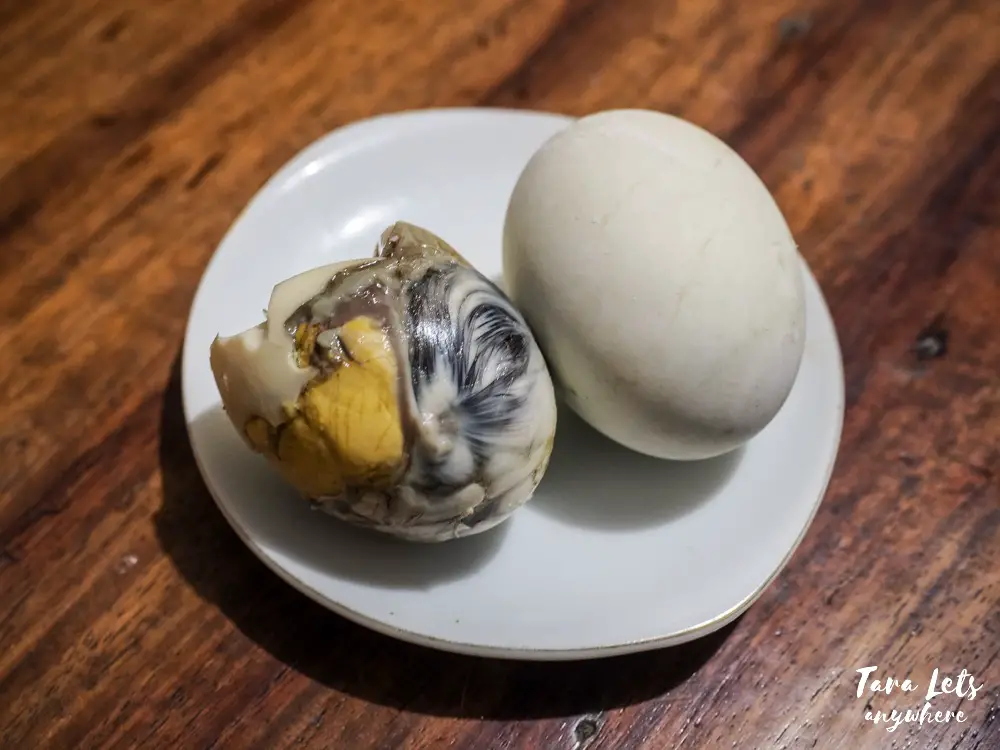
You might have already heard of balut before. This infamous Filipino delicacy is not for the faint of heart, but at the same time it’s street food at its most thrilling.
Balut is essentially a fertilized duck egg, boiled and then eaten with vinegar while still warm. How to eat balut: drink the soup and then eat the yolk and the chick. If the chick has feathers, then the egg is too old to be balut and you should ask for a replacement.
This dish has a rich, gamey flavor that is loved widely and wildly. It’s certainly one of the foods in the Philippines that you should try at least once.
What’s your recommended food to try in the Philippines? Let us know in the comment section below!
What to read next:
Planning a trip to the Philippines? Check out these guides!
- First-Timers Guide to the Philippines
- Best Places to Visit in the Philippines
- Things You Need to Know Before Visiting the Philippines
- Is the Philippines Safe to Visit?
- Off-the-Beaten-Track Destinations in the Philippines
- Suggested 2 Weeks Itinerary in the Philippines
- Suggested 3 Weeks Itinerary in the Philippines
- Philippines Packing List
Others:
Save this for later!

Katherine Cortes is a long-time backpacker and a freelance writer/editor. She likes beaches, snorkeling trips, and relaxing staycations (preferably with bath tubs!).



3 Comments
Floby
Thank you for this I enjoyed reading and nagutom ako haha
yin
I love everything here! Except I eat Penoy more than balut. I was happily surprised you mentioned 8 GInataang Puso ng Saging. I remember enjoying and eating a lot of it at a friend’s house when I was in elementary. I miss this dish. I might find a way to cook it if I find banana blossoms because I’ve never tried to. 🙂
Carl
1, 2, 11, 17 are love 🙂